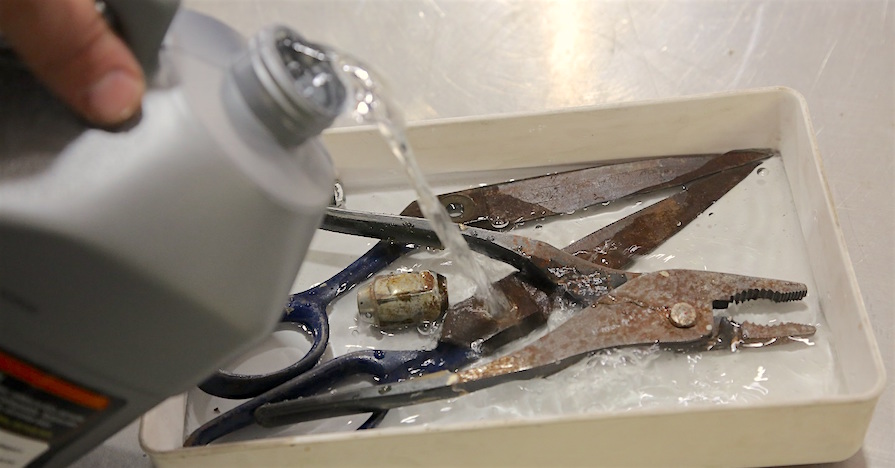Most of the tools you have at home have metal parts that can rust due to the use received or inadequate maintenance by its owner. To release these from the traces of rust and return them clean and useful, follow some simple recommendations. Let’s discover how to clean rusty tools.
The most common solution to face this problem is the use of a harsh chemical that serves to loosen the oxide. However, the manufacturers of these liquids recommend taking into account that there are several types of rust. For example, if it takes little time and is not widespread, its elimination will be more natural. Keep reading: How to clean oven with cooking products
How to clean rusty tools?
If the stain is already on the whole machine and it has not been used for a long time, it is advisable to use a specific deoxidizer, even if it is more aggressive. The most severe problem could arise with those tools that already have corroded parts. It could make them irrecoverable if the damage is widespread.
When applying an abrasive chemical cleaner, gloves and a protective mask should be worn. Even if the work is done in a well-ventilated area. Once these precautions are taken, a jet of the product is applied to the tool. It is not necessary to leave acting for a long time.
Then the piece is gently rubbed with steel wool to finish removing the rust. It is not convenient to use sandpaper since this material can be too abrasive and may end up scratching the tool. It will facilitate the development of a new oxide layer.
After that step is completed, the tool is cleaned and rubbed with a cloth to remove the remains of the harsh chemical, leaving it ready for a new use. At this stage, it is advisable to spray the metal parts with a protective lubricant and wipe again. Being careful not to remove the new oil cover.
For those very rusty tools, it will be better to use a wire brush to eliminate the worst part. First, the harsh chemical is sprayed on the object. It is rubbed with the brush to finish cleaning everything with the metal wool and cloth. In some complicated cases, there may be a need to repeat the whole process.
Bicarbonate oxide removers
If you do not want to resort to a commercial oxide remover, you can opt for a more homemade option, consisting of a paste of sodium bicarbonate and water that is applied to the affected areas of the tool and left to act for several minutes. Then, rub the surface with soft metal wool until all the oxide disappears. Finally, everything is covered with a cloth, and a lubricant coating is applied.
To prevent rust of rust on repaired tools. It is recommended to place pieces of chalk or a small cloth bag with rice inside your storage box. It is also important to clean those working media immediately after you have stopped using them.
Clean rusty tools with wd40
Spray the rusted surface with WD-40 enough to get the area wet. After spraying the area, allow it to settle for 10 minutes before proceeding. WD-40 works to break the junctions between metal and rust. It requires more time to give better results.
Use a wire brush on the surface you wet with WD-40. With rust loosened, the brush should clean most of the corrosion. Brush the surface until you are satisfied that you removed most of the rust. Spray WD-40 again on the surface and let it settle again for 10 minutes.
Use sandpaper to remove any remnants of rust. You can use sandpaper of 120 to 160 for a moderate oxide and sandpaper of 80 or less for a more serious oxide. While sanding, be sure to remove as much oxide as possible. If you leave something, the oxide will reappear at some point.
Reapply WD-40 in a necessary amount in areas where it is difficult to remove rust, allowing it to soak before you continue brushing or sanding. Rub the area with steel wool to polish the metal and remove the smaller remnants of rust. After removing all the rust, cover the surface with a WD-40 application. This will provide a protective barrier against future corrosion.







Average Rating